Gabestok
Once Rotten, Always Rotten
6/23/21 | J. Proust
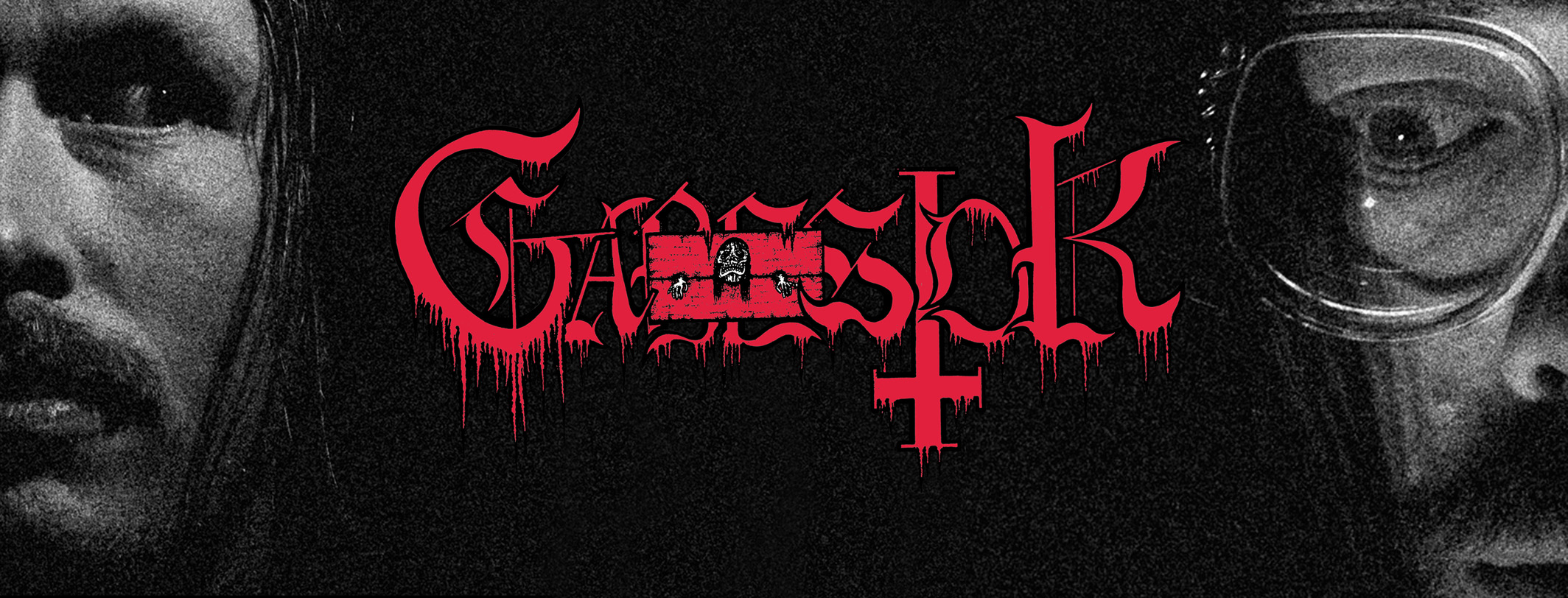
The Danish simply don’t metal like the rest of the world. That much has been obvious since Mercyful Fate debuted in the early days of the 1980s. They’re looser somehow, the Danes of extreme metal. They’re almost always killer, and total slayers at their instruments, but whether it’s this or that genre is for the rest of us to figure out. And only a country like rotten ol’ Denmark could’ve produced the duo Gabestock. A B-horror-influenced punk/black/heavy metal bad acid trip hangover.
After I, their first demo tape, released in 2015, drummer DØ and guitarist/vocalist Fleetwood Asp (AKA Fleep) of Gabestok slowly entered the black metal scene, as if through the back door—where punks and hippies must entry. Over the next three years, Gabestok’s reckless punk sound started growing fangs, longer hair. Their riffs matured, developing venom therein. By the time Gabestock released their debut album Tre the duo were pushing a black metal-punk hybrid completely unique in both scenes. Not that anyone really noticed, or cared to point out. Such raucous and violent records usually take a few years for the dust to settle, for the spilled blood to foster any kind of intellectual discourse that may spring up. Hey, don’t look at me. After hearing Én gang rådden, altid rådden, Gabestok’s 2021 sophomore slasher, not to mention På herrens brakmark, the punk/black metal hit of the pandemic, we reached out to the band themselves. Rather than wax intellectual, we thought we’d let the band tell their own story regarding their (ongoing) evolution, their involvement in the now-infamous(ly cool) “Korpsånd circle,” and the near-synaesthesia of their vintage horror movie-style punk/black metal.
This interview was conducted via email during May of this year. In an effort to preserve our subjects’ voices, the answers are only lightly edited whenever absolutely necessary.
Since 2015, at least, Gabestok has been DØ and Fleetwood Asp exclusively, is this correct? What brought the two of you together in the first place? Take us back to that first time you two jammed together.
DØ: Gabestok has been a duo since the beginning, yes. A few years prior and up until Gabestok was a thing, Fleep and I played together along with another good mate in a band that went by the name Ryg din sidste bøn (translates into something like smoke your final prayer and probably – perhaps not! – makes more sense in danish). We never released anything nor did we play live. But we did record a sketchy demo with 25 minutes of music that we shared with close friends. We been thinking about recording these songs, and on a few occasions lately, we have been rehearsing with this project again. The songs were conceptual and more or less one long song about the assassination of Erik Klipping, a danish king back [in] the 13th century. The songs were fairly doom and heavy metal oriented. Most of all strange and weird – probably like Gabestok in that aspect, hah. Anyway, the first jamming sessions with Gabestok was a contrast to what we had been doing for a few years with this former band. We felt like playing fast, aggressive and energetic! Not spending too much time on composition. We just wanted to finish something!
But the great thing about jamming with FLEEP is that we have been listening to [a] lot of the same music since high school. It’s very easy to get into a common vibe without any or too many explanations. That’s a privilege and similar to a secret language!
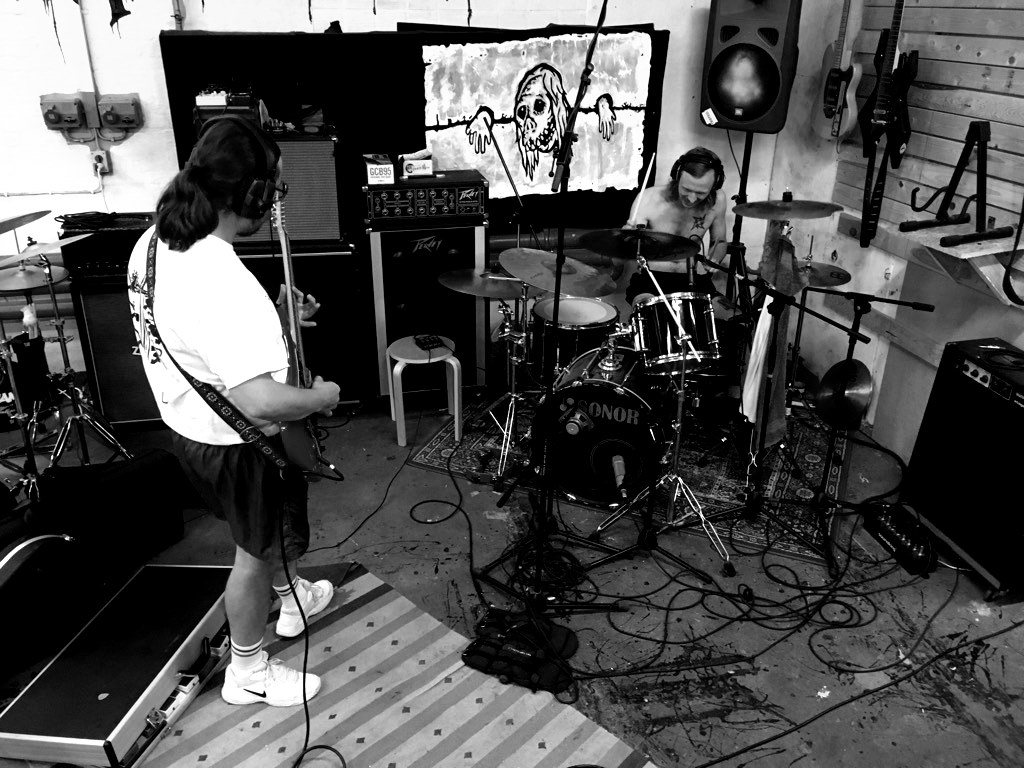
At what point did you two realize that a duo was all you needed to make Gabestok rule?
DØ: Being a duo has its advantages and disadvantages. FLEEP and I keep discussions to a minimum when rehearsing, so there really aren’t a lot of arguments regarding sound or structure. No disrespect to any of our other projects that include various band members, but it’s A LOT easier getting shit done being just two. No argument is needed if you want to harvest on some inspiration from a song that differs from common metal influences. Whatever that is. That is sometimes a bit more difficult in some of our other projects, hah. We are curious on a lot of the same music, whether that being metal, country, rock, pop, ambient or noise. And we never really articulated what Gabestok should sound like and hopefully it will evolve and become something else over time. With other projects you often agree on a certain genre, sound of aesthetics beforehand. This has never been the plan with FLEEP and I. Or maybe I’m speaking on my own behalf right now?!
FLEEP: That’s exactly what Gabestok is all about! It’s our project and there is no other rules than that we can do whatever we want. It’s in every sense of the word an evolving band from release to release and because of that it’s a win some lose some situation. You might not like this one but you will surely hate the next!
Your first demo hits so much more like a punk album. The songs are short, catchy and punchy in that expressly punk kind of way. What was going on back in 2015 that Gabestok were so full of energy and inclined to write these catchy little bangers?
DØ: The first demo was recorded in [a] bunker here in Copenhagen where we used to rehearse back then. On the inside the bunker had the shape of a little UFO and this is where we had been playing the same 25 minutes of music with Ryg din sidste bøn for a few years. I think Gabestok was a reaction to that. On the same note, FLEEP and I were both tripping over Alucarda and Dogmatist, the latter a Copenhagen hardcore/punk band and we wanted to do something in that vein. It turned out different of course because we didn’t know – and probably still don’t know! – what the fuck we were doing.
Anyway, Zimmer (our band mate from Ryg din sidste bøn) recorded and mixed our first release and then Brystet (some friends from Århus) released it.
Two years later, here comes your second demo. The punk element remains in abundance, but there's a deeper quality to the songs. The riffs are more complex, the songs more dynamic. The energy remains in the red as ever, but the two of you seem to have more control over more difficult songs. Your sound has undergone a progression over time, but II—recorded at Mayhem by JBH—seems to represent a watershed moment in your discography. Would you agree?
DØ: Definitely. We met Jesper Bagger Hviid around 2014 or 2015. We hit it off immediately and were fond of many of the same things regarding music and not least movies.
When we recorded II, Kelvin Brorson also helped out as technician. Kelvin plays in a band called The Beardy Durfs, which back then sounded a bit like if Pere Ubu had a baby with Captain Beefheart in the grunge era. FLEEP and I watched them at the Roskilde Festival many years prior and were fans, so it felt nice making music with new faces that were doing something, in my opinion, different at the time.
The songs on II were conceived at a different rehearsing place than our first release. FLEEP bought some new gear and I did the same, which pushed those songs into a probably more metal-influenced sound. I mean the songs still have a punk vibe, but I find those songs to be a bit more butch and less “quirky” compared to our first release.
But Jesper Bagger Hviid is a major part of Gabestok and the way we hopefully progress a bit from each output. We try to point him in a certain direction before each release, but his approach to recording is very much that he preferably lets his more immediate feelings be a part of this process. With a band like Gabestok, which is really not about perfection—whatever that is!—there has to be some kind of process or variation from one release to the other. We have to learn from it as well as we’re not accomplished musicians in that sense.
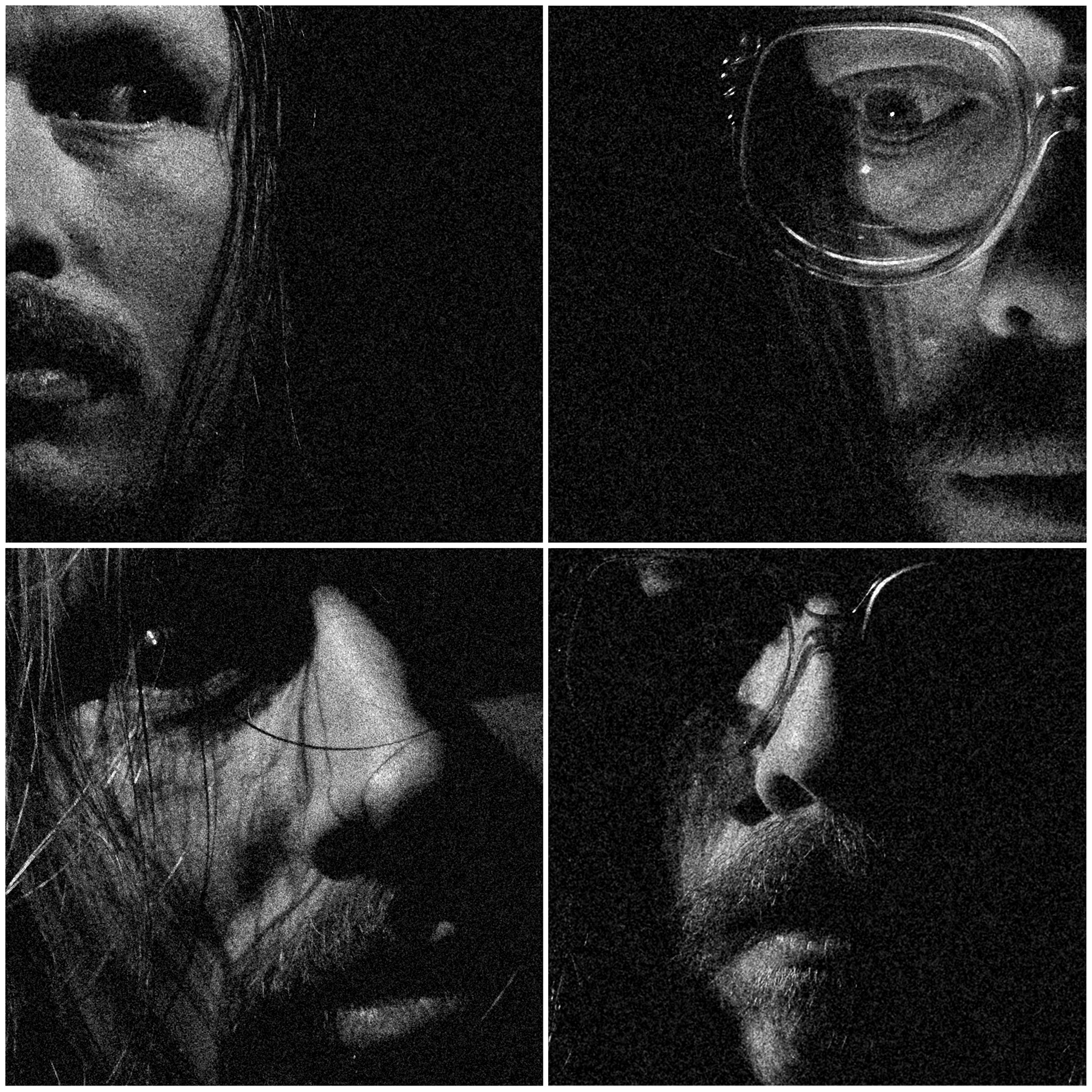
The Gabestok logo now features a man inside a stock. How did this new logo come to be? Does "gabestok" mean, like, "stock" or the place where people were imprisoned and left to suffer public humiliation?
DØ: Exactly. A “gabestok” is a stock or pillory. An instrument for punishment and public humiliation. I have a soft spot for horror movies from the ‘60s and ‘70s and around the time we chose our band name, I think I had just watched Mark of the Devil and Witchfinder General.
We had never played or rehearsed in front of anyone except a few close friends, so we thought the name was suitable now we were putting ourselves out there. When you speak up and put stuff out there is chance that people will tell you to shut the fuck up. We needed to cope with that to begin with and we weren’t really sure whether we would enjoy playing our music live. Now we really don’t care that much—it is what it is. And we’ve grown fond of playing in front of an audience on a few occasions. It keeps you on your toes.
But regarding the guy in the stock, I have always considered him being a rebel and fisty little fellow. Stick it to the man even though you’re in deep shit knees high!
Henrik Houmann, a close friend we met at around the same time as we met Jesper, designed our font and logo. He really nailed it from day one and he changes it from time to time, so the poor fucker in the stock can have a little miserable life of his own. Henrik also drew the artwork for our EP På herrens brakmark, so he has been a part of Gabestok for a while now.
What happened in those two years between your first and second demos? What was going on in Copenhagen's underground music scene? Was this when the collective Korpsånd was beginning to form?
DØ: I’m not really sure what exactly led up to Korpsånd being “formed”. All of a sudden, many of the guys now affiliated with Korpsånd seemed to meet up to the concerts each week, especially those at Mayhem. There were—and still is—many late nights at Mayhem where we play tons of music for each other. After a year or thereabout, Jesper and Emil wanted to document what we all were doing, which led to the Korpsånd compilation. We were probably four or five different “factions” (in lack of a better word) that joined forces on this release.
How did you two fit in? Are the two of you involved in any other projects within Korpsånd? That's you both on the right at the end here, is that correct? How did you come to be a part of the collective?
DØ: Musically we were probably a little odd compared to most of the other bands on the Korpsånd compilation. But then again, there isn’t any common ethos musically or lyrically on these 24 tracks. I mean, from Ærekær to Seidr to Blot & Bod to Lesion. It’s all over the place. What ties the compilation together is a musically common aggressiveness, Jesper’s production and the fact that all the songs (except the two tracks from Seidr) being recorded at Mayhem and not least within a short period of time.
And yup, we’re lurking in the right corner of that picture. I remember that most of us had a hangover when that picture were taken—some still sleeping.
I don’t think that any of the bands nor artist thinks that much about Korpsånd anymore. I mean, we still help each other out, and many of us now share the same rehearsal space and we play in a shit load of bands together. What I really like about this “collective” is that everyone continues to outdo themselves and that makes you want to keep on improving as well.
So I guess that the term Korpsånd is mostly used in articles/reviews or in press material from labels to point the listener in a certain direction, which makes perfectly good sense. I’m fine with that.
FLEEP: We had just recorded the two tracks on a 4-track cassette recorder in our rehearsal space and as I remember it Jesper heard and liked them and asked if we wanted to record them for the compilation as well. There is no doubt that we are a little different than the rest of the projects, but for us that is the case for all the bands on the compilation and releases after that. Some might say that it is all the same but none of us care what anyone thinks, feels or says.
As of now I am not personally in any other "public" projects but in the not too distant future there are a couple of releases coming up.
DØ: On the Korpsånd compilation, I played drums on the two tracks by Hollow Hand.
I play with two other bands at the moment: a dirty and fisty rock and roll band called Guldsjakal and a retarded thrashy and proto-black-ish band that goes by the name Discipel. Guldsjakal will release our second EP soon and we’re working on a full-length when our schedules fit. In regards of Discipel we’re taking a short hiatus, but we will be recording a full-length soon. We have around eight songs at the moment, so we’re not far from the goal.
What can you tell us about your tracks from 2018's Korpsånd compilation nestled in the middle of the record, like razor-sharp deep cuts?
DØ: At the time, I really thought those two tracks were much stronger than what we had done previously. I still like to play ‘Midt om natten’. It feels good playing that song on the drums for some reason.
FLEEP: ‘Midt om natten’ was the first song where we tried out Danish lyrics, and I found out that I could write way more cynical and weird lyrics because of that change. Being “invited” into this collective also made us want to try out new things and eventually invest and dig into the metal parts of our song writing more than the fuzzy punk rock sound that we had going on. Both tracks are still very different from the rest of the compilation. I will always try to make my riffs as catchy as possible—that’s just my nature and if the riffs have a pop-sensibility it’s much more fun to write aggressive and angry lyrics. You might like and get the vibe of this riff but lyrically speaking I’m giving you the middle finger, heh.
DØ: A classic Gabestok song should feel similar to something like a sweet caress on the cheek and then a hard punch in the face.
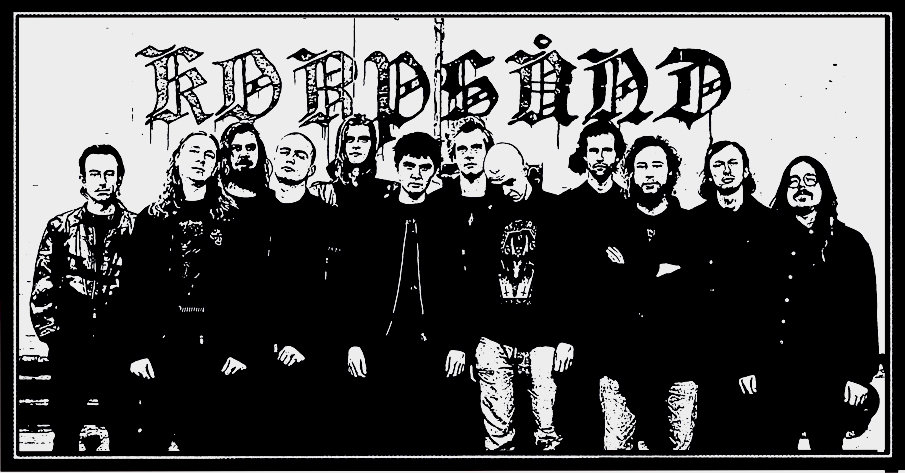
What made you decide to start using your native language for the song titles and lyrics?
FLEEP: Most of the other bands on the comp were singing, no wait yelling, in Danish. I never really thought that it would work for us because the themes of the first tracks were sarcastic and over the top. But it was a very natural thing to do and now the lyrics are a way bigger part of the songs.
With Tre we hear, truly for the first time, a sound entirely your own. What non-music influences were starting to inform your joint creativity by the time you were setting out to record Tre, your full-length/third release?
DØ: I had been watching a severe amount of Hammer Horror movies a couple of years prior to TRE. James Bernard composed scores for Hammer Studio’s most well-regarded output. Hence, many titles by director, Terence Fisher, who in my opinion probably is the most accomplished director from Hammer Film. Not to forget Harry Robertson, who composed scores for some of the more explicit and kinky output in the early 70’s: Lust for a Vampire, Twins of Evil, Countess Dracula, etc. Anyway, what I like most about Hammer Horror in its heyday from 1958 until 1974 are those scenes that nearly flat out disregard narration and instead just focus on this eerie, sectarian and hazy vibe. How to integrate these almost meditative horror vibes, without letting these elements steal focus from the riffs and the groove of the song, is something we are still working on.
What can you tell us about the recording session for your first full-length Tre? How was recording this different from recording your second demo?
DØ: All of the songs on TRE except perhaps the final track, ‘Intet uden’, were written so they would work live with just the two of us. Compared to ‘Én gang rådden, altid rådden’ they rely much more on the bass track. But we recorded nearly everything over the course of a weekend. First day with guitar/drums. Second day with guitar dubs, vocals and some layering synth sounds here and there. The approach to recording was not that different compared to II. However, for some reason TRE got to have this dank and moldy bass sound. It’s quite fucked up when you think about it—I really like that. There’s a kind of fogginess to the feel of the record, I think.
FLEEP: Yeah it was pretty much the same setup as “II”. The biggest change was the decision to use synth in a more noticeable way.
Judging by the song titles of Tre and the record cover, the themes seem to focus intently on death. What's up with your preoccupation with death on this album?
FLEEP: I think we have a pretty memento mori approach to life in general. Most people probably do and especially now when the stats of life and death of the plague is revealed to us every day at 2 o’clock in Denmark. It’s just a big part of life that you will die and music is a way to escape the grim facts but to us it’s more fun to remind everyone about it. But that’s pretty much metal in general right?
DØ: There definitely is a fair degree of cynicism and a touch of macabre in our lyrics. Not sure if most people have the same approach as us to life and death in general though. Most people probably think we’re a bit retarded to be honest!
What's Fleetwood's rig setup like when Gabestok plays live? From what I can tell there's a big Ampeg in the works, or maybe that's a Sunn? Do you split your guitar between a guitar amp and a bass cab? How does it work?
FLEEP: It depends on the show. I usually split between a guitar stack and a bass amp, but everything depends on what the venue have and the other bands bring—public transport is a bitch with a stack. I use the same setup in our rehearsal space and at home, the venue at Mayhem, where I use an old Peavey stack and a Sunn Stage lead amp. The only thing we have on our rider is that we want it to be uncomfortably loud!
How did the coronavirus pandemic hit your area and how did Gabestok weather the ordeal at first? Were the two of you prevented at all from playing together?
FLEEP: The country went on lockdown early in the pandemic, so it didn’t hit us that hard in the death tolls, but everything was cancelled so on a personal note the plague was a knee to the balls. We were booked to play Roskilde Festival, the biggest festival in Denmark and northern Europe, and was looking forward to that. Instead we wrote and recorded the new record during the summer of 2020. Our rehearsal space is pretty big so we were able to play together and because of the lockdown we had a lot of time on our hands. We actually had a pretty good time during lockdown.
DØ: Yeah, we also missed out on Aalborg Metal Festival and Metal Magic, which we had been looking forward to. We were quite productive creating songs though and with that being said, we’re not a long way from recording the next album.
Today (May 15 2021) marks the one-year anniversary for the release of På herrens brakmark. Was this EP written during the pandemic as well?
FLEEP: På herrens brakmark was made and recorded before the pandemic. We were just a little slow in finishing it and figuring out how and who should release it. We are pretty lazy and were probably focused more on gigs and drinking.
The four songs of På herrens brakmark are janglier and more garage rock-sounding than any of your previous releases. What was in your system that you wanted to get out with this release?
FLEEP: Our taste in music is pretty broad and sometimes we just try out some new things. On this EP we felt like playing some cow-punk on ‘Jeg slæber’ and a little thrash worship on ‘Gode gamle Kharon’. We jam a lot when we rehearse and most of our music starts that way. If something sounds interesting, we record it so we don’t forget and find out where to go from there.
DØ: If I remember correctly, we talked quite a lot about mid-tempo songs back then. I think ‘Jeg slæber’ had something to do with me wanting to shuffle on the hi-hat, and it might have been much faster to begin with. The lyrics made it seem legit and relevant to do it a lot slower though!
What does the title—which means "The Lord's Fallow Land..." in English, right?—what significance does this have for the band?
FLEEP: “På Herrens mark” is a Danish expression that translates to someone being lost or is in need of help. After TRE we decided to make an EP with Jason in mind, who runs Fallow Field. Fallow Field were supportive of our “scene” from day one and have also released Blot & Bod, Vaabnet and the Korpsånd compilation among other. Anyway, because of that we changed the expression to “brakmark” (Fallow Field) instead of “mark” which means field in Danish. Unfortunately, Fallow Field had a short hiatus and we weren’t really sure for how long. Strange Aeons were cool and up for it and we just kept the title anyway.
Ultra-heavy slammer "Omklamret af mørke" sticks out in your discography. It's like a Gabestok death-doom track. What's this song all about and how do the themes work with its half-doomed/half-thrash/punk sound?
FLEEP: We like the death-doom thing and we’ve listened to a lot of slow and heavy shit through the years. A lot of the lyrics in Gabestok are about death and a lack of faith in the society and humanity. All of that combined with old Danish sayings which is often turned around and in the end means something completely different. This specific song is inspired by something my dad has always said: “Don’t hang your head if you are standing in shit up to your neck”. The slow part is elaborating on the theme of self-hate and decaying and the faster part responds with a get your shit together.
DØ: I remember our talking point was creating a song that shifts pace, tempo and had a certain level of dynamic range. But you had “written” the first riff of the song from home and then I think we just took from there.
I tend to like those songs that save a killer riff until the end/outro, and I think FLEEP did just that on this song especially.
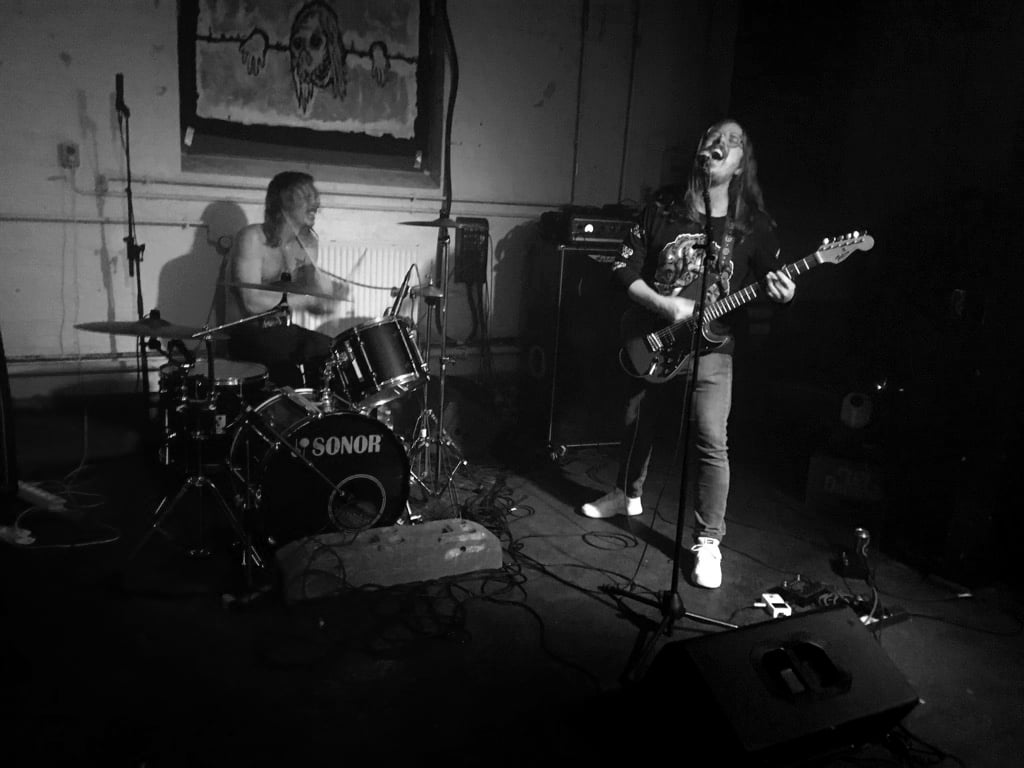
Gabestok has never sounded better than on your latest album, Én gang rådden, altid rådden. Now demonstrating some overt heavy metal influences, it's at once your most ambitious, most accomplished and wildest album. How do you two feel about it?
FLEEP: We really liked writing and recording the album but honestly we’re surprised how well it has been received in and outside of Denmark. We’re aware that we make some pretty schizophrenic music inspired by many different genres, but it’s nice that a few people seem to like it anyway. We are rather low-key dudes with a whatever works approach to life, so it’s also a little strange, when a guy from Iran suddenly writes that he likes the record.
DØ: Like all the rest of our releases, with the exception of our first, it was recorded at Mayhem, the same place where we rehearse now. It’s by no means a top end studio, but we’re comfortable there and we still have a lot to learn. With that being said, I feel quite good about Én gang rådden, altid rådden. I think it's an honest and gradual improvement of Gabestok. On this release we wanted to have a little more “room” in our songs, so we could dub and layer a few more melodies here and there. Our songs are not exactly rocket science in regards of composition, hah. But we did try to “pep up” the structure of a few of the songs on this record. We tend to try to figure out how to make the base track work for every song before addressing how to “glue” all the components together – the core has to work on its own if we ever have to play live (as a duo)! But compared to our earlier releases we probably talked more before recording about what was supposed to happen in regards of backing vocals, synth, guitar solo, percussions and so on. So yeah, I guess one could argue it’s our most ambitious record so far. Trial and error. I hope we’ve become a little better at articulating to Jesper what we want – that’s usually the most frustrating and difficult thing about recording. Getting the idea in your head explained to the guy, who can make it happen.
What was it like recording Én gang rådden, altid rådden? How does the sentiment "once rotten, always rotten," as the title suggests, come out in this album's sound?
FLEEP: It was great. We made it with Jesper Bagger Hviid, who also recorded the last three releases. He will also record our next album. As DØ already mentioned, we’re good friends and work very well together. He knows our sound, our inspirations and understands what we want and say. The technical aspects of recording are not really in our wheelhouse yet, so it’s comforting when our sometimes weird requests are understood.
The sentiment of the title and the sound is that even though we sound different we still only see the worst in humanity.
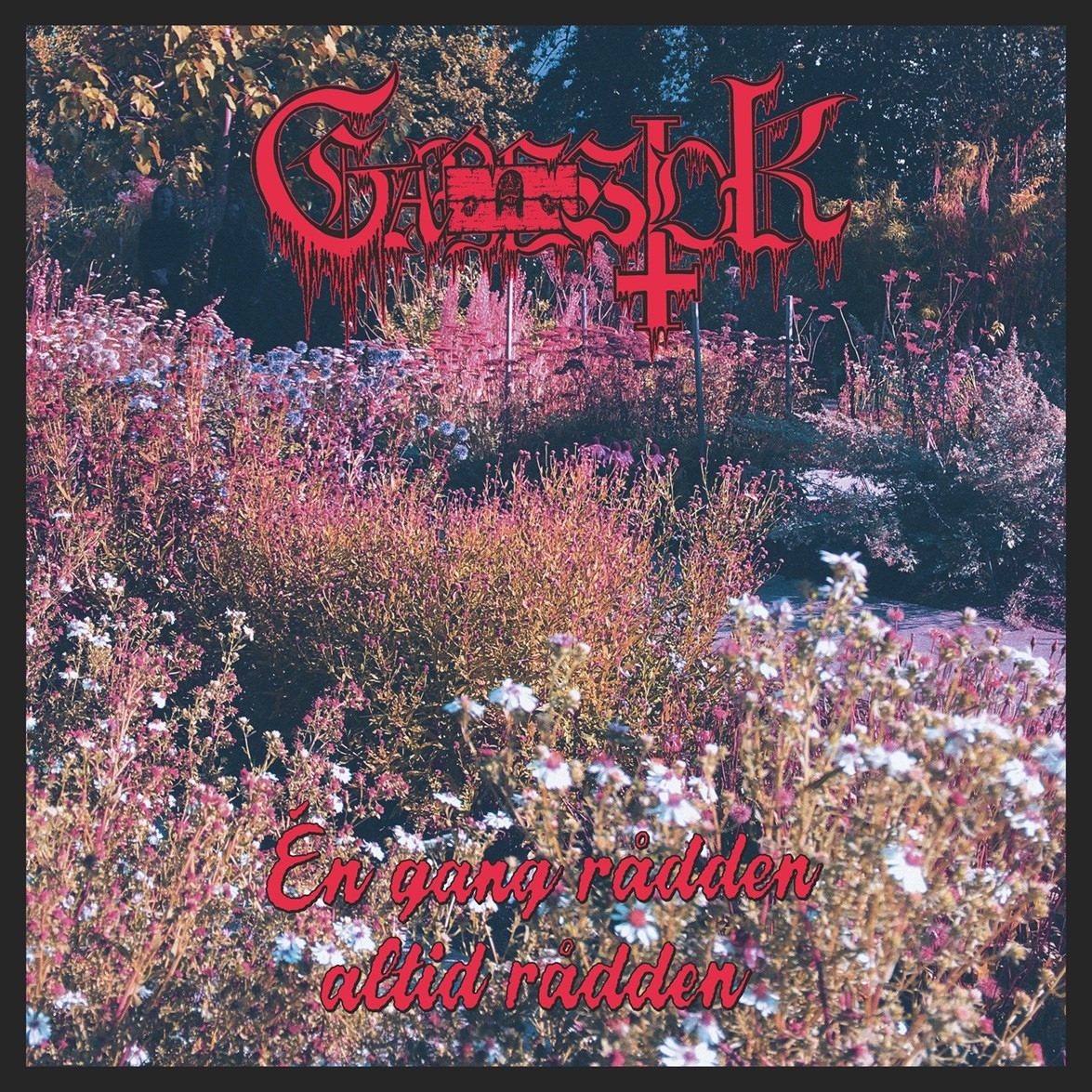
DØ: That sentiment goes for many things when you think about it. I felt that many songs on this record had this mentally confusing element going on. Thematically towards a confusion, spiralling patterns and a paranoia feel to it. I was thinking about mazes and spiral staircases quite a lot when listening to the record at first. We were thinking about elaborating these elements in regard to the artwork. We ended up with something a bit more broad though.
Like all of our releases from TRE and onwards, Morten Damsgaard made our artwork. Like Henrik and Jesper, he’s a close friend and, for us, a part of this project whether he wants to [be] or not, hah. This time we fed him with a lot of Jess Franco references as I’ve been trying to comprehend his filmography lately. The general theme for the artwork was daytime horror. It’s difficult not to talk about spiral staircases without mentioning Vertigo. That car scene where James Stewart follows Kim Novak has the same hazy feel as Hammer Horror at its best.
The opening track is a revelation. What can you tell us about writing and recording "Træk stikket?" When did Fleetwood know he wanted to lay down some killer falsettos howls?
FLEEP: Thank you! That track also came to us through jamming. I’m sure we had a pretty heavy metal kind of day and the falsetto howls were a natural extension of the riff. We love the King (the rightful heir to the Danish throne we might add) and whether the howls work is up the listener to decide. We were born under the sign of the moon though!
DØ: Long live King D! I think it was the first track we had for this record. We have played it live for a while now. But I didn’t know what you had in mind when you talked about the “intro” to the song before the drums kick in. It was not until I heard the keys in the dubbing phase that I really understood what the fuck you were thinking, but I really like how this record opens.
"På gravens rand" is such an incredible track. All of them are, but this one is so poised and that lead tone is undeniable. What can you tell us about this song? What's it about?
FLEEP: “På gravens rand” means on the edge of death so the theme of the track is not knowing what tomorrow brings other than that you one day will die. It’s not a seize the day or make the best of your time thing—just a simple reminder. This one started out with the drums and the rhythm grooving in a hypnotizing way. We wanted it to be psychedelic and the lead part was honestly pulled out of the ass when we recorded it.
DØ: Heh. I had couple of weeks where I was just walking around getting a groove on with Gary Glitter - “Rock and Roll Part 1 and 2” in the earphones. Not exactly some obscure shit, but fuck, that song has a seriously ballsy vibe going on. The simplistic drum pattern is inspired by those couple of songs.
Once again we hear synths and keyboards playing a major role in not only the atmosphere of this album, but the songs themselves. Who's behind the keyboard? What inspires these additions to the music?
FLEEP: As all sensible lovers of music, we dig the second wave black metal. Many of those records use keyboards in a major way and what’s not to love? I play the keys—poorly. Usually it’s after we’ve recorded the drums and the guitars, that we hear and try out synth and keyboard sounds. Other times we know exactly where the track is going after the first recordings. Keyboards just give you that pinch of horror that we love.
Do you have any major events happening through the rest of this year? Are you looking forward to playing shows again?
FLEEP: We’re working on the next album at the moment and have some shows coming up in the near and distant future. We got a lot of request in the days around the release of the album, which is nice because we like playing shows. As of now, the audience has to sit down during the shows, which is a total fucking bummer, so we really look forward to shows with a little more action. Also because we love going to shows ourselves.
DØ: Metal Magic Festival is taking place from the 8th until the 11th of July. I’m looking forward to that one! The audience on that festival is not fucking around. They know their metal and rock and roll, so it’s a privilege to play on that festival.
Alright, dudes! Thanks so much for your time. Please feel free to include any final sentiments.
DØ: Thanks for some thoroughly researched questions. Fuck you seem to know more about this project than most of our close friends. A little freaky to be honest, haha!
Well, look out for the new Gullo Gullo record when that is being released. I was lucky to get a little preview a few months ago, and that record is going to be insane.
And you should check out Jernved if you can dig that up anywhere online. They’re making some legit and to the point BM—not fucking around like us, hah! I was lucky to find a demo tape somewhere.
If you’re into more experimental areas of metal then keep an eye out for BRODER’s new record as well. Not sure when it’s being released, but they have found a way to radicalise their sound and approach, which was already fucking full frontal retarded!
And remember to listen to Roy Orbison on a weekly basis of course.
Thanks!



